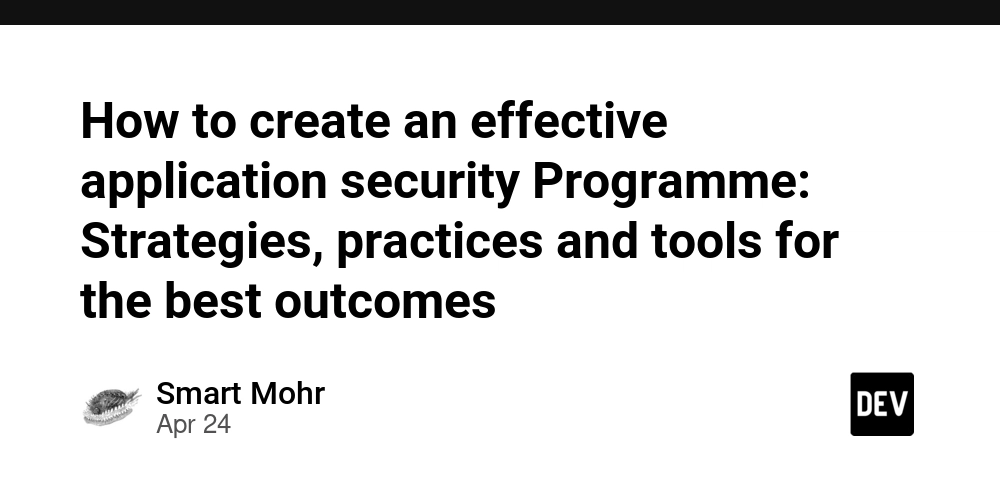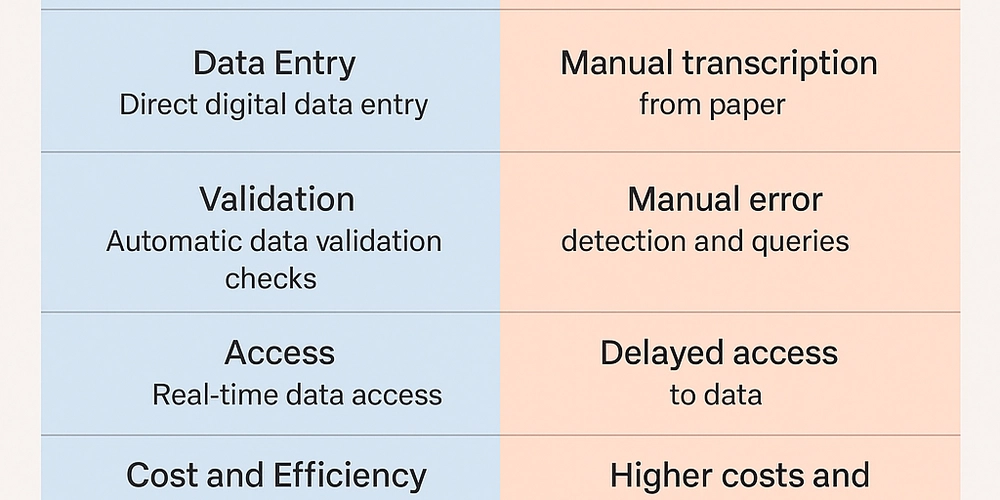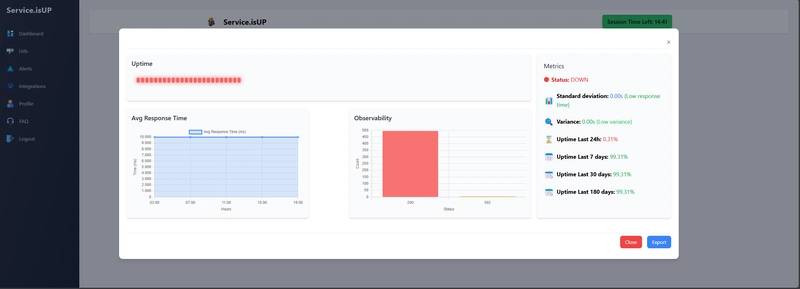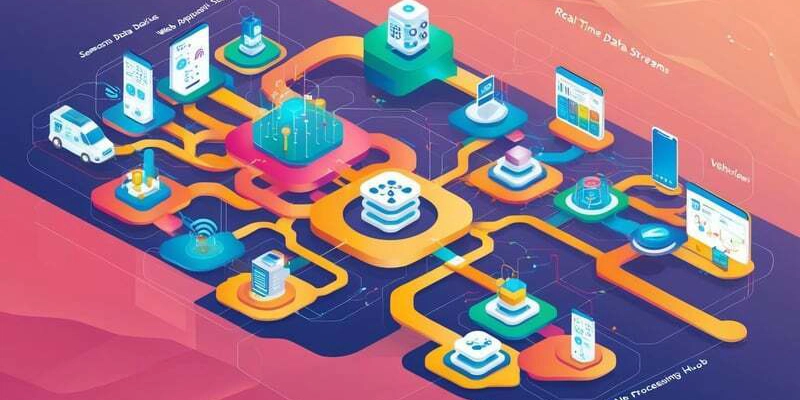How to create an effective application security Programme: Strategies, practices and tools for the best outcomes
AppSec is a multifaceted, robust approach that goes beyond basic vulnerability scanning and remediation. The constantly changing threat landscape in conjunction with the rapid pace of innovation and the increasing complexity of software architectures calls for a holistic, proactive strategy that seamlessly integrates security into all phases of the development lifecycle. This comprehensive guide will help you understand the most important elements, best practices, and cutting-edge technology that support an efficient AppSec programme. It helps organizations strengthen their software assets, mitigate risks and promote a security-first culture. The underlying principle of the success of an AppSec program lies a fundamental shift in thinking that sees security as an integral aspect of the process of development, rather than a thoughtless or separate task. This paradigm shift requires a close collaboration between security, developers, operational personnel, and others. It eliminates silos and fosters a sense shared responsibility, and encourages an approach that is collaborative to the security of applications that they develop, deploy, or maintain. Through embracing a DevSecOps approach, organizations are able to integrate security into the structure of their development processes, ensuring that security considerations are addressed from the earliest stages of concept and design up to deployment as well as ongoing maintenance. This method of collaboration relies on the development of security standards and guidelines that provide a structure for secure programming, threat modeling and vulnerability management. The policies must be based upon industry best practices, such as the OWASP Top Ten, NIST guidelines, as well as the CWE (Common Weakness Enumeration) as well as taking into consideration the specific needs and risk profiles of each organization's particular applications and the business context. By writing these policies down and making available to all stakeholders, companies can guarantee a consistent, common approach to security across all their applications. It is important to fund security training and education courses that assist in the implementation of these guidelines. These programs should provide developers with the knowledge and expertise to write secure software and identify weaknesses and adopt best practices for security throughout the process of development. Training should cover a broad spectrum of topics, from secure coding techniques and the most common attack vectors, to threat modelling and principles of secure architecture design. The best organizations can lay a strong foundation for AppSec by creating an environment that encourages ongoing learning and giving developers the tools and resources that they need to incorporate security into their work. Organizations must implement security testing and verification processes as well as training programs to identify and fix vulnerabilities before they are exploited. This requires a multi-layered method that incorporates static as well as dynamic analysis techniques along with manual penetration tests and code reviews. Static Application Security Testing (SAST) tools can be used to analyse the source code and discover vulnerability areas that could be vulnerable, including SQL injection, cross-site scripting (XSS), and buffer overflows at the beginning of the development process. Dynamic Application Security Testing tools (DAST), however, can be used for simulated attacks against applications in order to discover vulnerabilities that may not be discovered by static analysis. While these automated testing tools are necessary to identify potential vulnerabilities at scale, they are not an all-purpose solution. Manual penetration testing and code review by skilled security professionals are equally important to uncover more complicated, business logic-related weaknesses which automated tools are unable to detect. Combining automated testing and manual verification allows companies to obtain a full understanding of the security posture of an application. They can also determine the best way to prioritize remediation efforts according to the level of vulnerability and the impact it has on. Organizations should leverage advanced technologies like machine learning and artificial intelligence to enhance their capabilities for security testing and vulnerability assessment. AI-powered tools can analyze vast amounts of code and data, identifying patterns and abnormalities that could signal security vulnerabilities. They also learn from past vulnerabilities and attack patterns, continually improving their abilities to identify and stop new security threats. Code property graphs are an exciting AI application that is currently in AppSec. They are able to spot and address vulnerabilities more effectively and effectively. CPGs provide a rich, semantic representation of an application's source code, which captures not only the syntactic

AppSec is a multifaceted, robust approach that goes beyond basic vulnerability scanning and remediation. The constantly changing threat landscape in conjunction with the rapid pace of innovation and the increasing complexity of software architectures calls for a holistic, proactive strategy that seamlessly integrates security into all phases of the development lifecycle. This comprehensive guide will help you understand the most important elements, best practices, and cutting-edge technology that support an efficient AppSec programme. It helps organizations strengthen their software assets, mitigate risks and promote a security-first culture.
The underlying principle of the success of an AppSec program lies a fundamental shift in thinking that sees security as an integral aspect of the process of development, rather than a thoughtless or separate task. This paradigm shift requires a close collaboration between security, developers, operational personnel, and others. It eliminates silos and fosters a sense shared responsibility, and encourages an approach that is collaborative to the security of applications that they develop, deploy, or maintain. Through embracing a DevSecOps approach, organizations are able to integrate security into the structure of their development processes, ensuring that security considerations are addressed from the earliest stages of concept and design up to deployment as well as ongoing maintenance.
This method of collaboration relies on the development of security standards and guidelines that provide a structure for secure programming, threat modeling and vulnerability management. The policies must be based upon industry best practices, such as the OWASP Top Ten, NIST guidelines, as well as the CWE (Common Weakness Enumeration) as well as taking into consideration the specific needs and risk profiles of each organization's particular applications and the business context. By writing these policies down and making available to all stakeholders, companies can guarantee a consistent, common approach to security across all their applications.
It is important to fund security training and education courses that assist in the implementation of these guidelines. These programs should provide developers with the knowledge and expertise to write secure software and identify weaknesses and adopt best practices for security throughout the process of development. Training should cover a broad spectrum of topics, from secure coding techniques and the most common attack vectors, to threat modelling and principles of secure architecture design. The best organizations can lay a strong foundation for AppSec by creating an environment that encourages ongoing learning and giving developers the tools and resources that they need to incorporate security into their work.
Organizations must implement security testing and verification processes as well as training programs to identify and fix vulnerabilities before they are exploited. This requires a multi-layered method that incorporates static as well as dynamic analysis techniques along with manual penetration tests and code reviews. Static Application Security Testing (SAST) tools can be used to analyse the source code and discover vulnerability areas that could be vulnerable, including SQL injection, cross-site scripting (XSS), and buffer overflows at the beginning of the development process. Dynamic Application Security Testing tools (DAST), however, can be used for simulated attacks against applications in order to discover vulnerabilities that may not be discovered by static analysis.
While these automated testing tools are necessary to identify potential vulnerabilities at scale, they are not an all-purpose solution. Manual penetration testing and code review by skilled security professionals are equally important to uncover more complicated, business logic-related weaknesses which automated tools are unable to detect. Combining automated testing and manual verification allows companies to obtain a full understanding of the security posture of an application. They can also determine the best way to prioritize remediation efforts according to the level of vulnerability and the impact it has on.
Organizations should leverage advanced technologies like machine learning and artificial intelligence to enhance their capabilities for security testing and vulnerability assessment. AI-powered tools can analyze vast amounts of code and data, identifying patterns and abnormalities that could signal security vulnerabilities. They also learn from past vulnerabilities and attack patterns, continually improving their abilities to identify and stop new security threats.
Code property graphs are an exciting AI application that is currently in AppSec. They are able to spot and address vulnerabilities more effectively and effectively. CPGs provide a rich, semantic representation of an application's source code, which captures not only the syntactic structure of the code but also the complex relationships and dependencies between different components. Utilizing the power of CPGs AI-driven tools, they can provide a thorough, context-aware analysis of an application's security position and identify vulnerabilities that could be missed by traditional static analysis methods.
Furthermore, CPGs can enable automated vulnerability remediation by making use of AI-powered repair and code transformation. By analyzing the semantic structure of the code and the characteristics of the weaknesses, AI algorithms can generate targeted, context-specific fixes that tackle the root of the issue instead of simply treating symptoms. This method will not only speed up removal process but also decreases the chance of breaking functionality or creating new weaknesses.
Another aspect that is crucial to an efficient AppSec program is the integration of security testing and validation into the continuous integration and continuous deployment (CI/CD) pipeline. Automating security checks, and making them part of the build and deployment process enables organizations to identify vulnerabilities earlier and block their entry into production environments. This shift-left approach to security enables faster feedback loops, reducing the amount of effort and time required to discover and rectify issues.
To reach this level of integration, enterprises must invest in appropriate infrastructure and tools to enable their AppSec program. This does not only include the security testing tools but also the platform and frameworks that allow seamless integration and automation. Containerization technologies like Docker and Kubernetes could play a significant role in this regard by giving a consistent, repeatable environment for running security tests and isolating the components that could be vulnerable.
Effective tools for collaboration and communication are as crucial as technical tooling for creating the right environment for safety and enable teams to work effectively in tandem. Issue tracking tools, such as Jira or GitLab will help teams identify and address the risks, while chat and messaging tools such as Slack or Microsoft Teams can facilitate real-time communication and knowledge sharing between security experts as well as development teams.
read security guide The effectiveness of an AppSec program is not solely dependent on the technologies and tools utilized and the staff who help to implement it. To establish a culture that promotes security, you need the commitment of leaders to clear communication, as well as a dedication to continuous improvement. Organizations can foster an environment where security is more than a box to check, but an integral aspect of growth through fostering a shared sense of responsibility engaging in dialogue and collaboration offering resources and support and instilling a sense of security is a shared responsibility.
In order to ensure the effectiveness of their AppSec program, businesses must be focusing on creating meaningful metrics and key performance indicators (KPIs) to track their progress and pinpoint areas to improve. These metrics should be able to span the entire lifecycle of an application, from the number of vulnerabilities discovered during the development phase, to the time taken to remediate issues and the overall security level of production applications. These indicators can be used to show the value of AppSec investment, identify patterns and trends, and help organizations make data-driven choices about the areas they should concentrate on their efforts.
To stay current with the ever-changing threat landscape as well as new practices, businesses require continuous education and training. how to use agentic ai in application security Attending conferences for industry, taking part in online training or working with security experts and researchers from the outside can help you stay up-to-date on the latest developments. Through fostering a continuous training culture, organizations will ensure their AppSec applications are able to adapt and remain capable of coping with new challenges and threats.
Additionally, it is essential to recognize that application security isn't a one-time event and is an ongoing procedure that requires ongoing dedication and investments. As new technology emerges and practices for development evolve organisations must continuously review and review their AppSec strategies to ensure that they remain efficient and in line with their business goals. By adopting a strategy of continuous improvement, encouraging collaboration and communication, and harnessing the power of modern technologies like AI and CPGs, businesses can develop a robust and flexible AppSec program that not only protects their software assets but also lets them create with confidence in an ever-changing and challenging digital landscape.
how to use agentic ai in application security










































































































































































![[The AI Show Episode 144]: ChatGPT’s New Memory, Shopify CEO’s Leaked “AI First” Memo, Google Cloud Next Releases, o3 and o4-mini Coming Soon & Llama 4’s Rocky Launch](https://www.marketingaiinstitute.com/hubfs/ep%20144%20cover.png)


































































































































![[DEALS] Sterling Stock Picker: Lifetime Subscription (85% off) & Other Deals Up To 98% Off – Offers End Soon!](https://www.javacodegeeks.com/wp-content/uploads/2012/12/jcg-logo.jpg)
















































.jpg?#)






























































































_NicoElNino_Alamy.png?width=1280&auto=webp&quality=80&disable=upscale#)













































































































![Apple Shares New Ad for iPhone 16: 'Trust Issues' [Video]](https://www.iclarified.com/images/news/97125/97125/97125-640.jpg)

![At Least Three iPhone 17 Models to Feature 12GB RAM [Kuo]](https://www.iclarified.com/images/news/97122/97122/97122-640.jpg)




































































































































